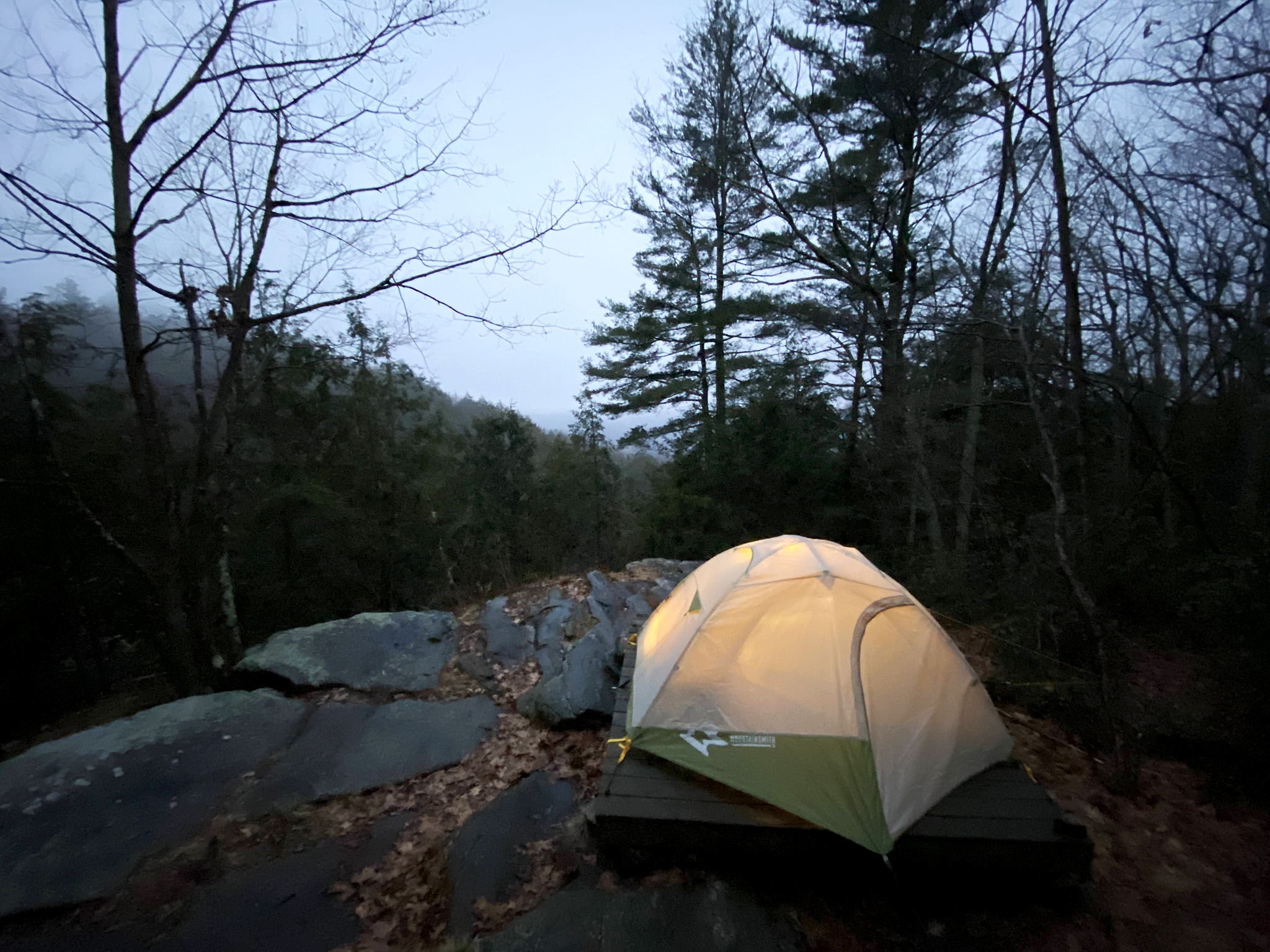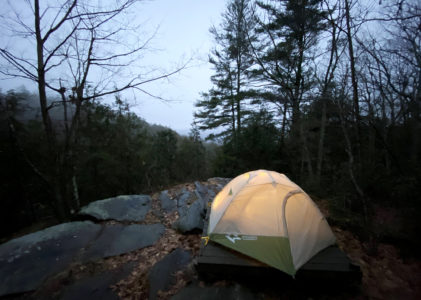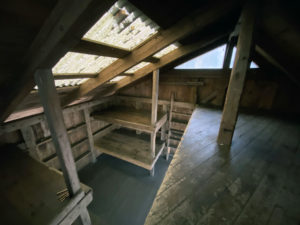Thinking big might be what inspires us to get into hobbies like camping and backpacking.
We picture ourselves far from home, waking up next to remote alpine lakes or watching the day’s last light flood a desert vista.
I’ve done it often. But lately I’ve been trying to think small.
As in: Where can I go without using up vacation time? Where can I go that’ll allow me to be spontaneous, instead of sweating the forecast for weeks ahead of the trip? Where I can go after work on a Friday, and be back in time to feel like I still have a full weekend at home? Where can I go where just one night feels restorative and satisfying?
As in: What’s more important—notching maybe one “epic” trip a year, or getting out as often as possible, gaining valuable experience along the way?
My trip to Monroe State Forest in early February was part of that exploration. And in the very final days of winter—on a Friday in mid-March that felt like mid-May—I added another option to my list of quick getaways. I closed my laptop around 4 p.m. and, one hour of driving and one hour of hiking later, I was at the Tom Leonard Lean-to on the Appalachian Trail in Great Barrington.
The site
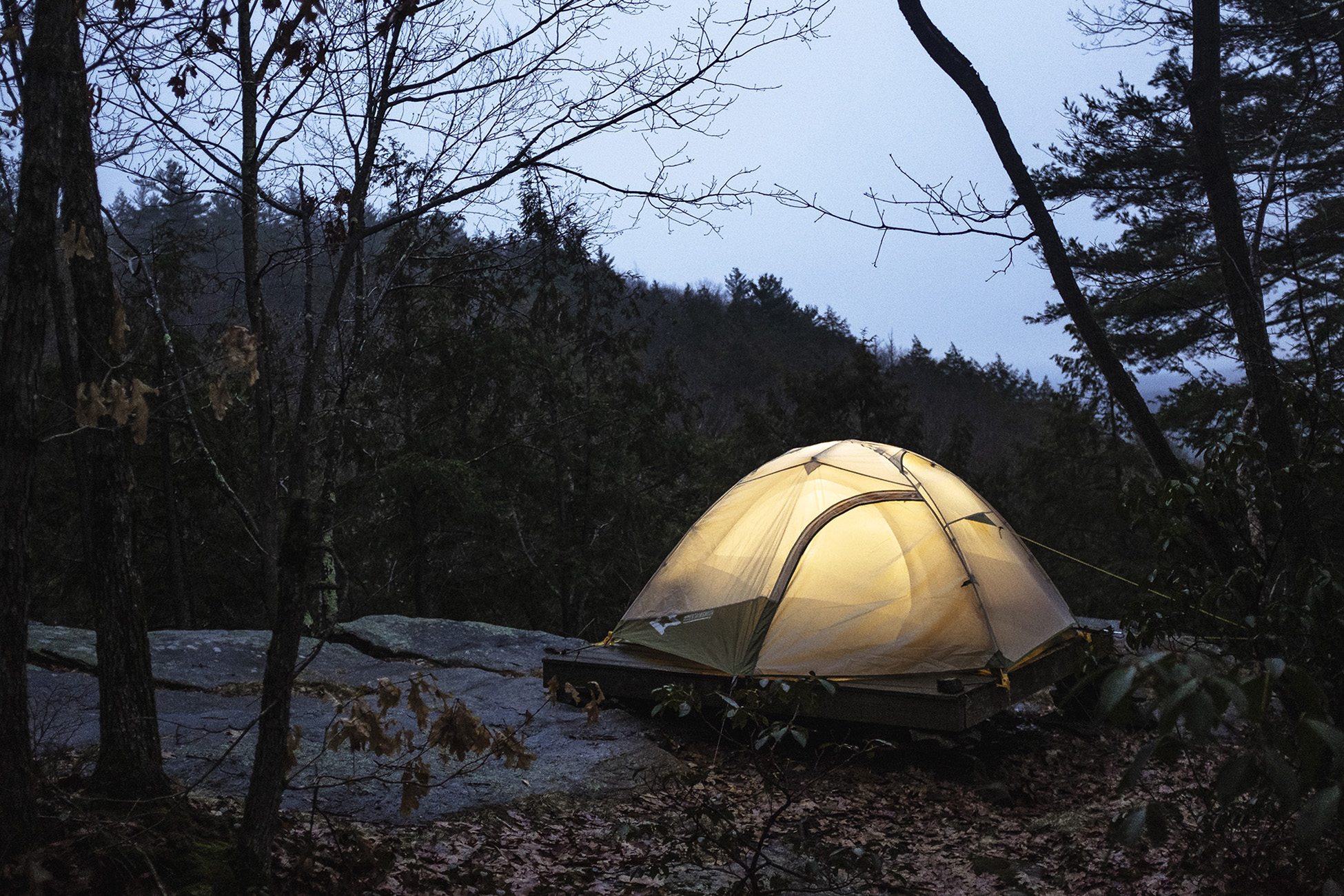
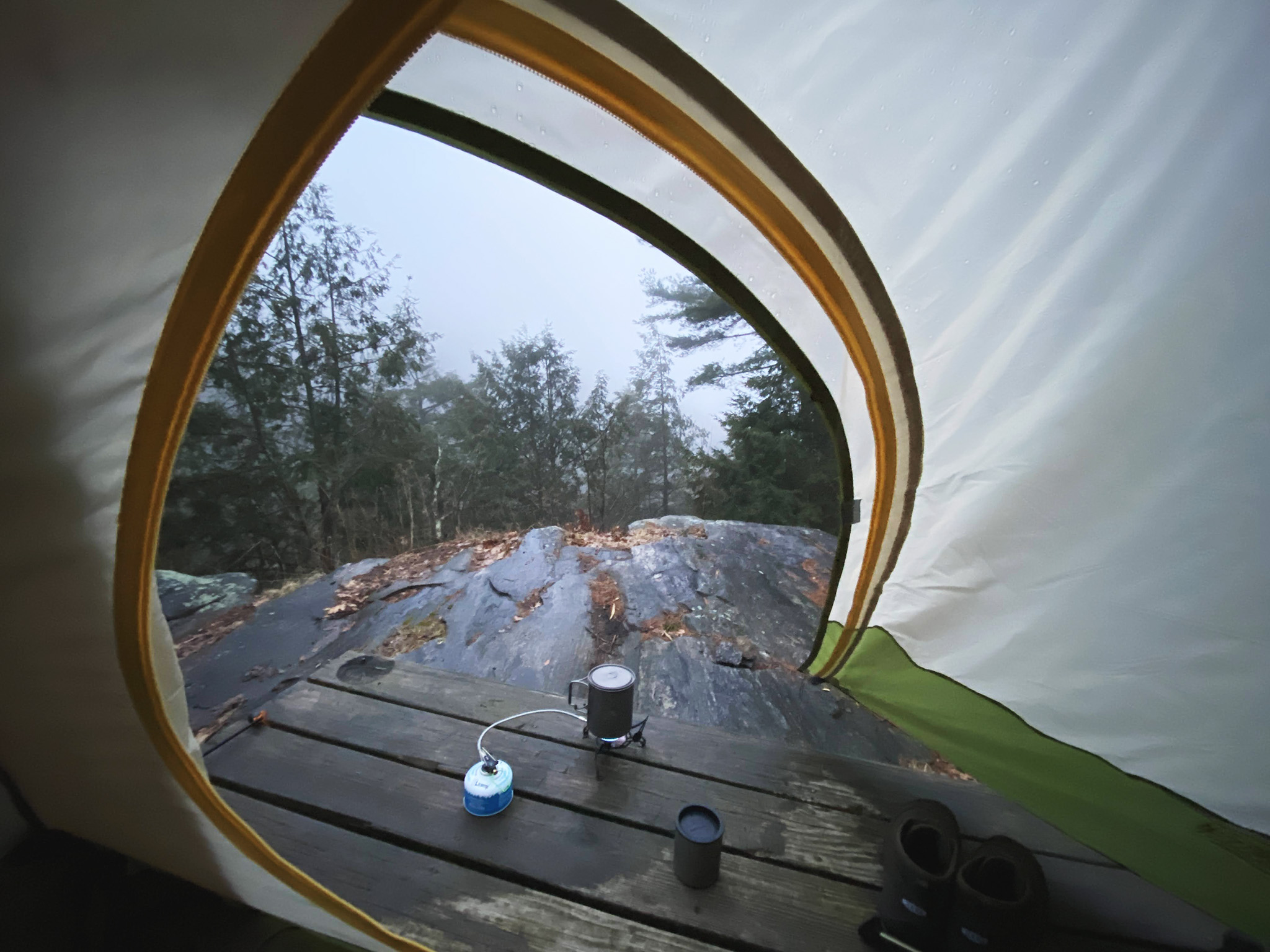
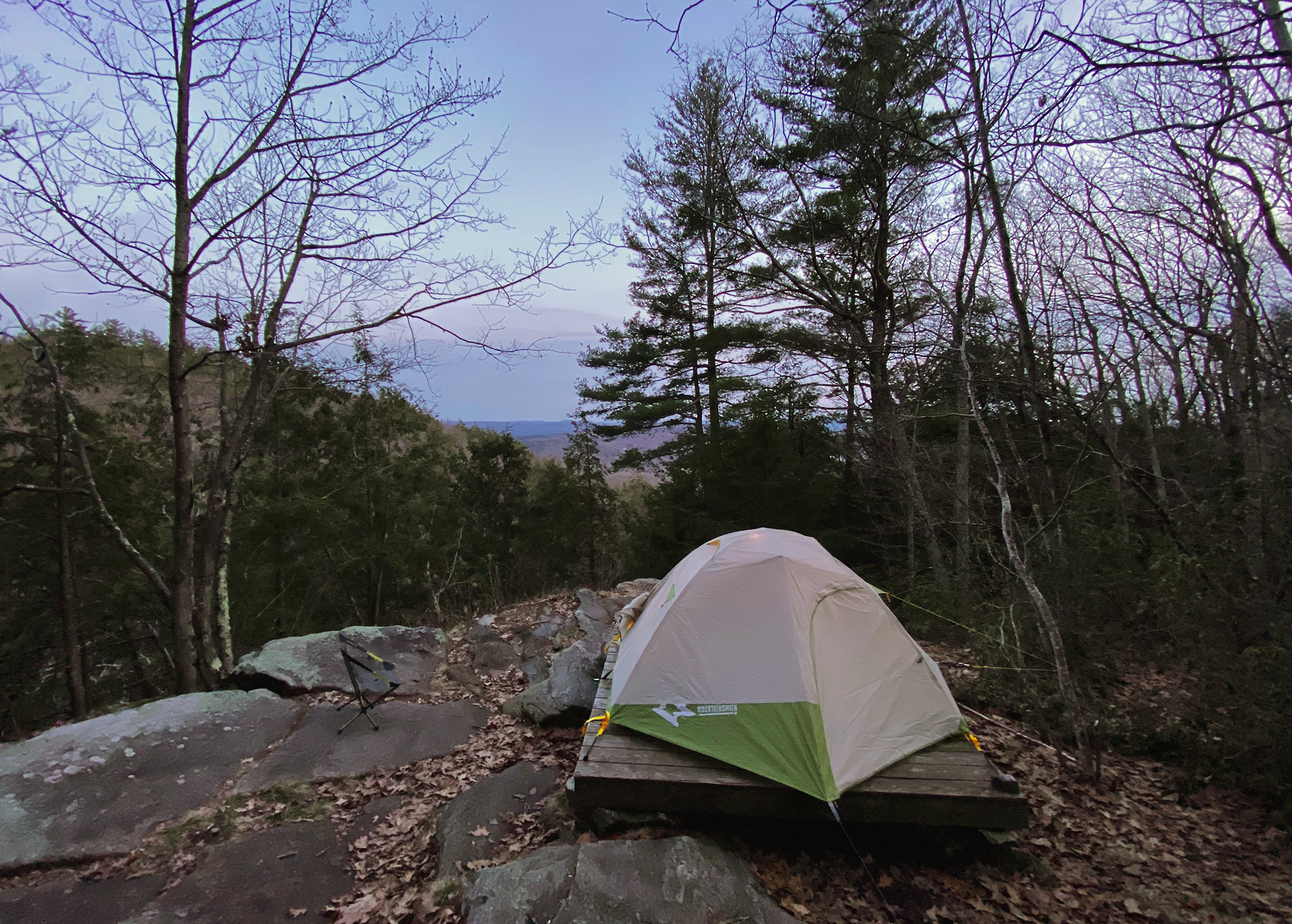
Tom Leonard was a ridgerunner “who spent his few years of adulthood in service to the Appalachian Trail,” reads a sign inside the shelter. It continues: “In 1985 his life was cut short by an unexplained brief neurologic illness.”
Ridgerunners are educators, ambassadors and stewards of the Appalachian Trail, responsible for everything from trail maintenance to promoting leave-no-trace principles among the hikers they encounter. It might be easy to take a trail for granted, but one as vast as the A.T. is a complex organism. It takes the hard work of a lot of people to sustain it—and to sustain the phenomenon of so many hikers trying to conquer it each year. I was thankful for the sign’s brief, poignant biographical sketch, and for the chance to learn that the lean-to was dedicated to someone who’d dedicated himself to helping others enjoy the outdoors.
The shelter has four bunks and a loft area that offers additional sleeping space. There’s a small fire ring and a picnic table out front; a bear box and a very well-maintained moldering privy are nearby. A seasonal brook was surging a stone’s throw from the shelter, but a more reliable, year-round water source requires a .2 mile walk down a ravine.
I set up on one of the site’s two tent platforms, on a rocky overlook. The platform is small—and my tent, at a roomy 93 inches long, filled it end-to-end. The vestibules also extended just beyond the platform’s edges. I was able to stake out one, and secured the other with paracord tied to a rock. Most true backpacking tents would be a better fit.
Thick morning fog dashed my hopes of enjoying the view along with a cup of coffee. But a flock of red-wing blackbirds posted up in a nearby tree, keeping me company with a raucous chorus that started and stopped so suddenly it sounded like a recording.
The hike
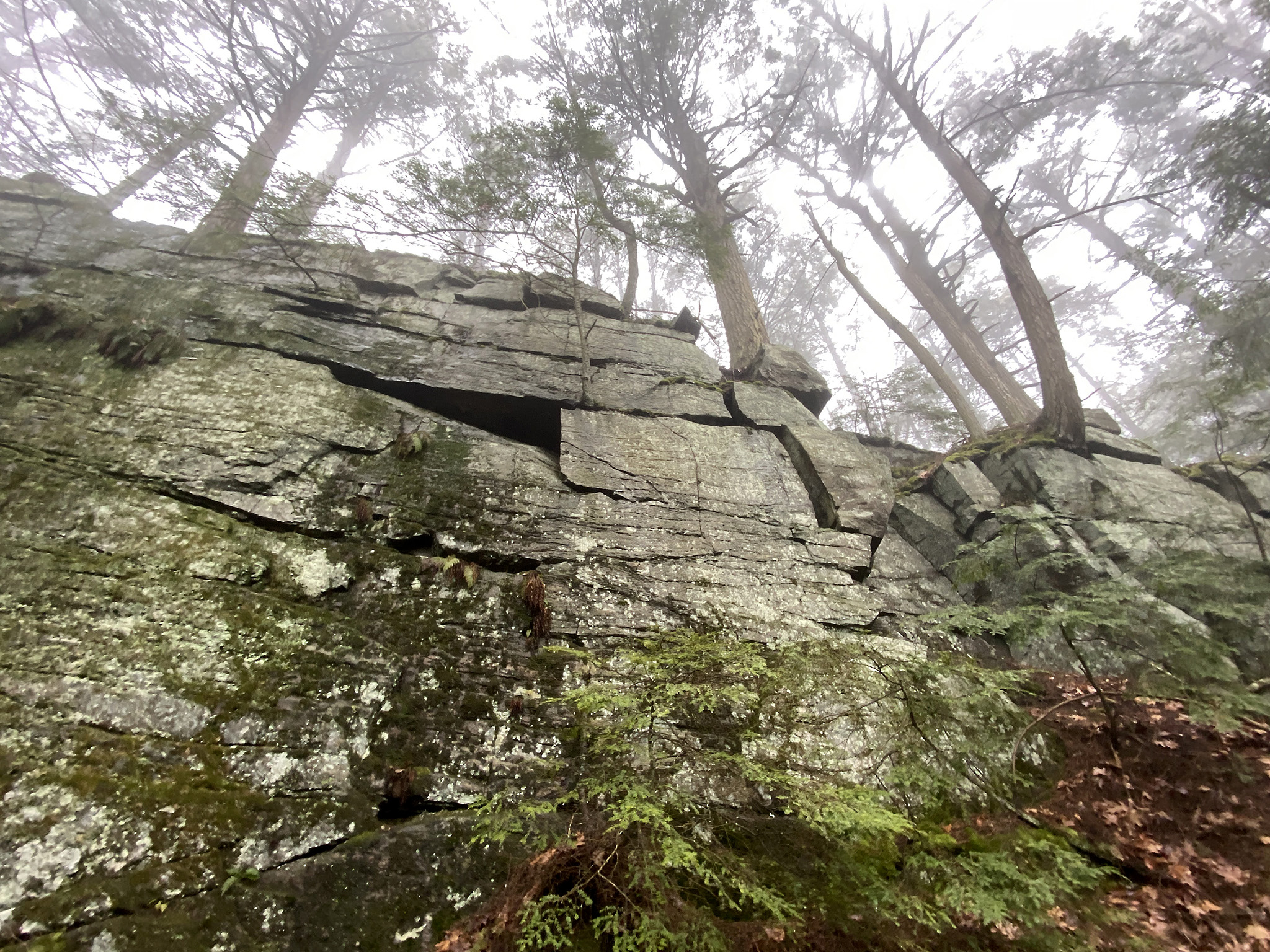
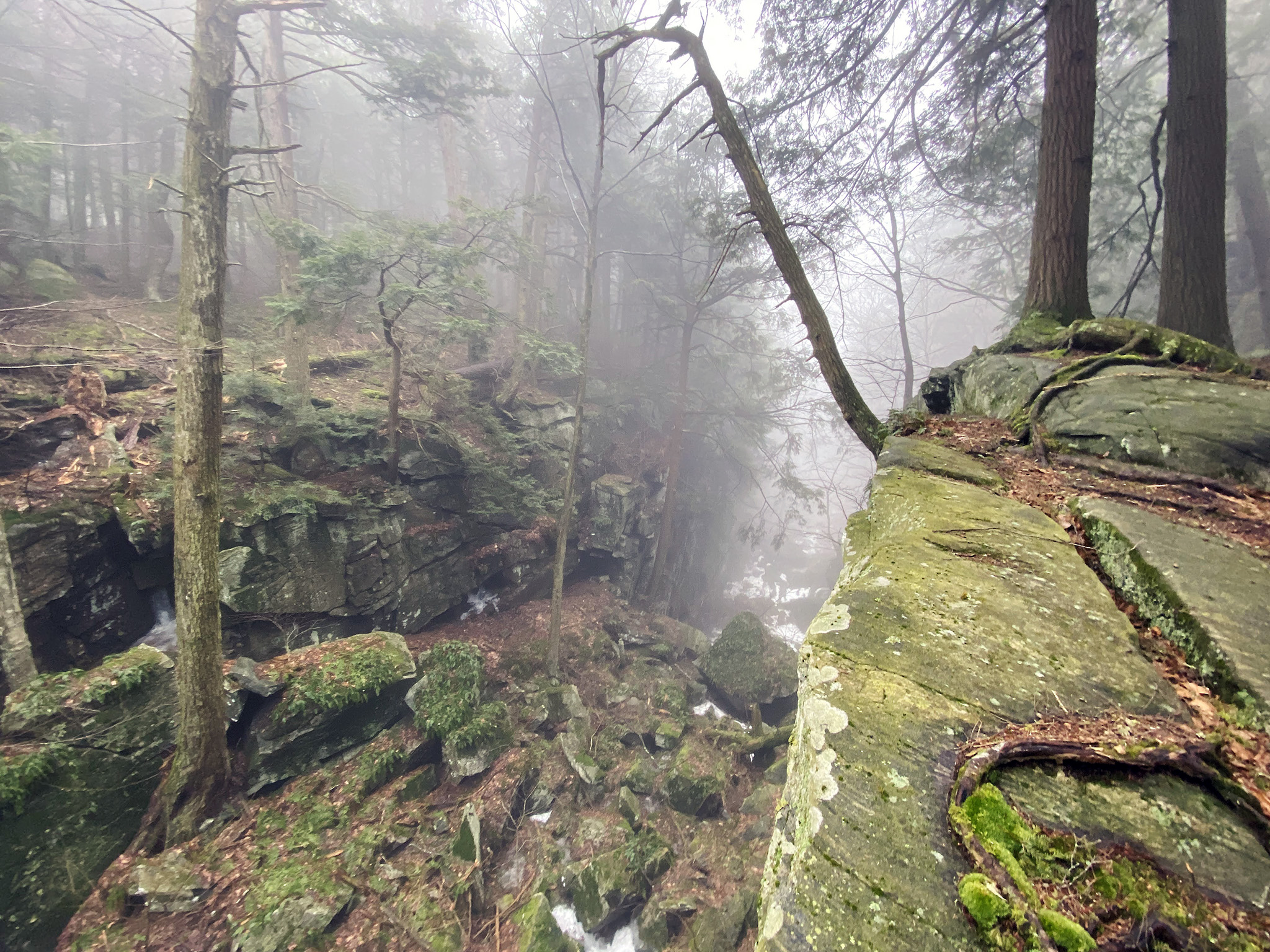
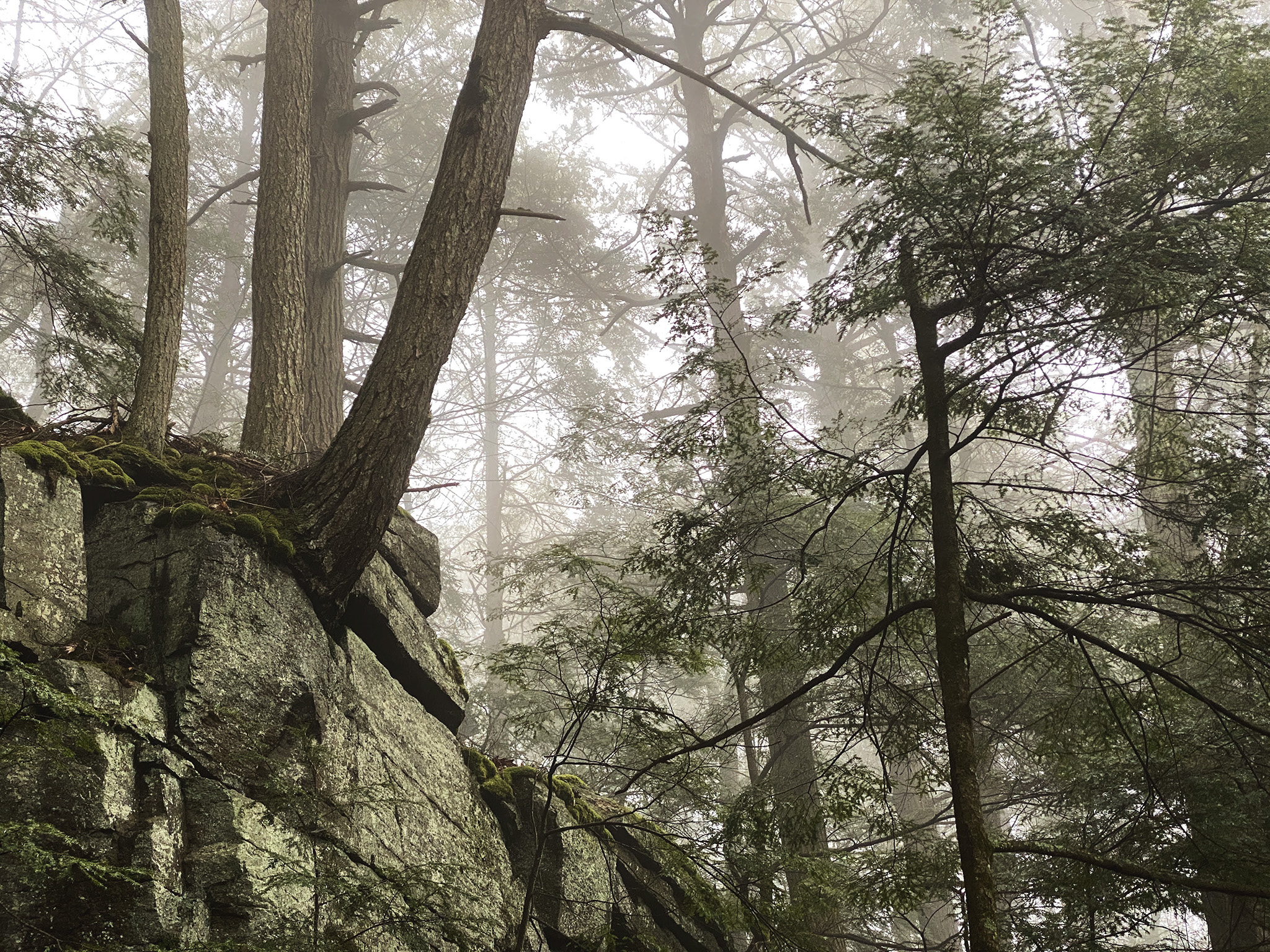
The site is just over a mile south of a small parking area on Lake Buel Road, with about 500 feet in elevation gain as you head up into East Mountain State Forest. The hike in took me nearly an hour; in part because I’m really out of shape, but also thanks to a slog through a fairly long, wet section of trail. Not surprising for March in New England.
Once you make it up to the mountain ridge, though, the trail veers to the right and follows a very scenic gorge. Rock walls also line the opposite side of the trail, and the site itself is nestled among a number of interesting rock formations.
Gear notes
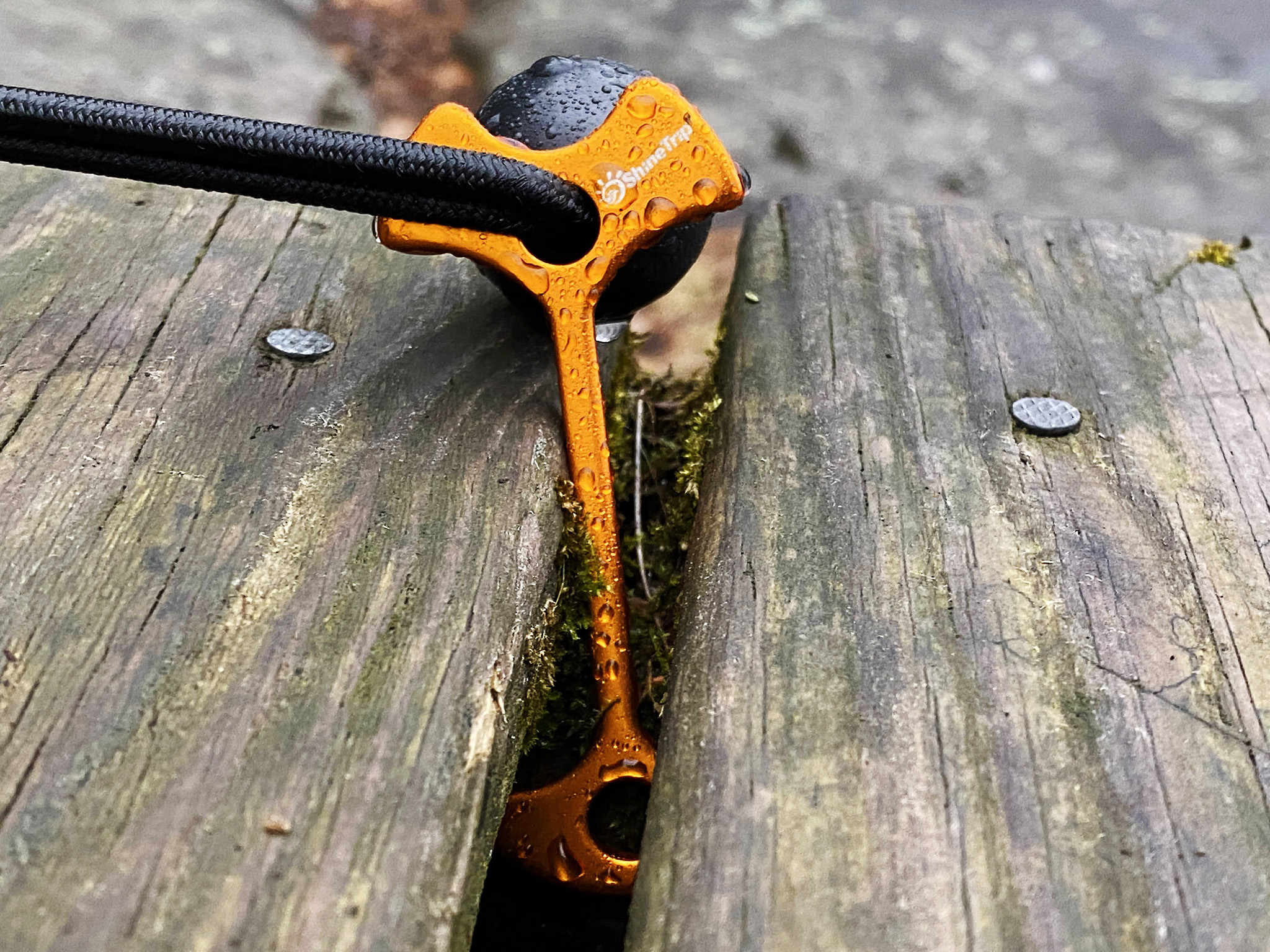
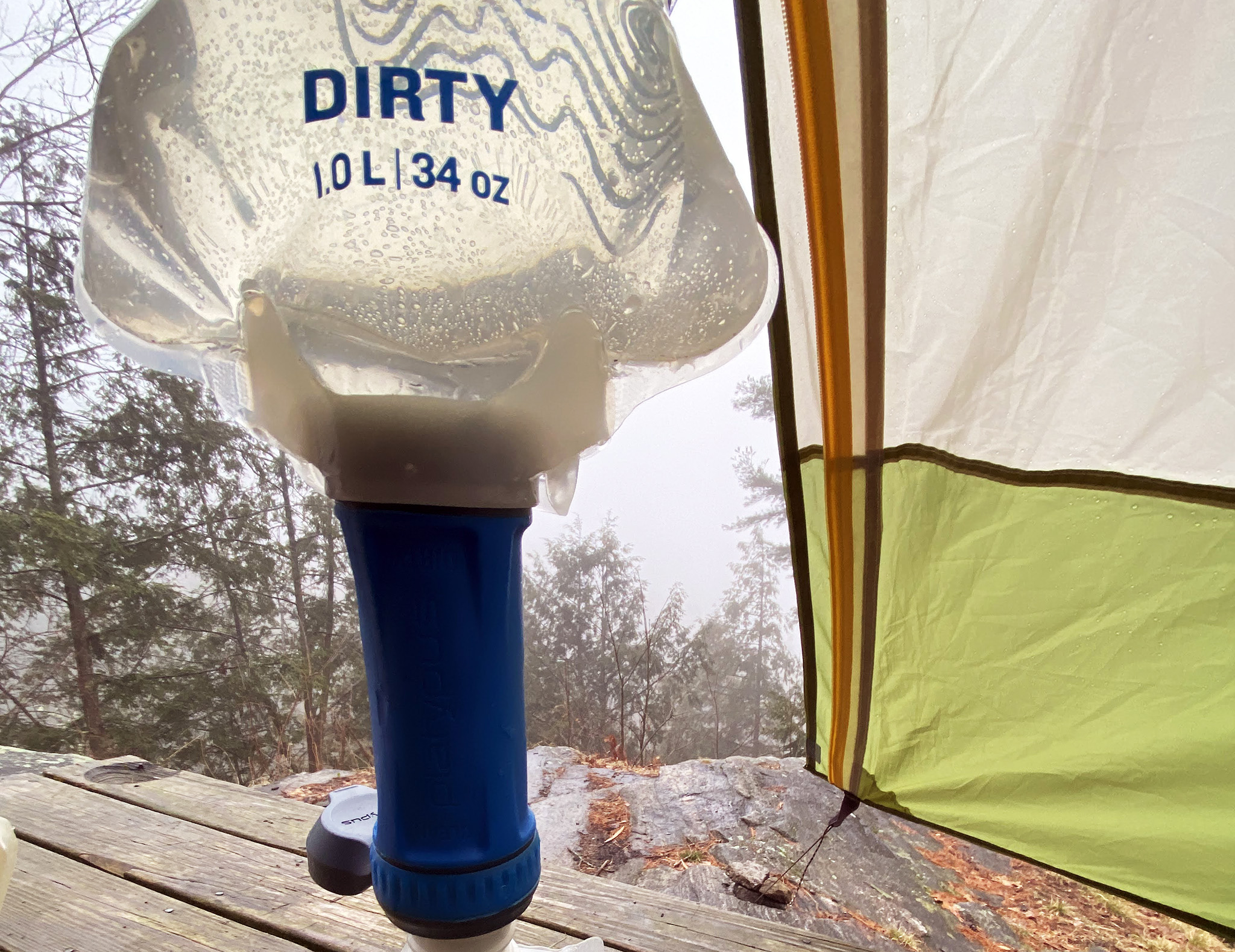
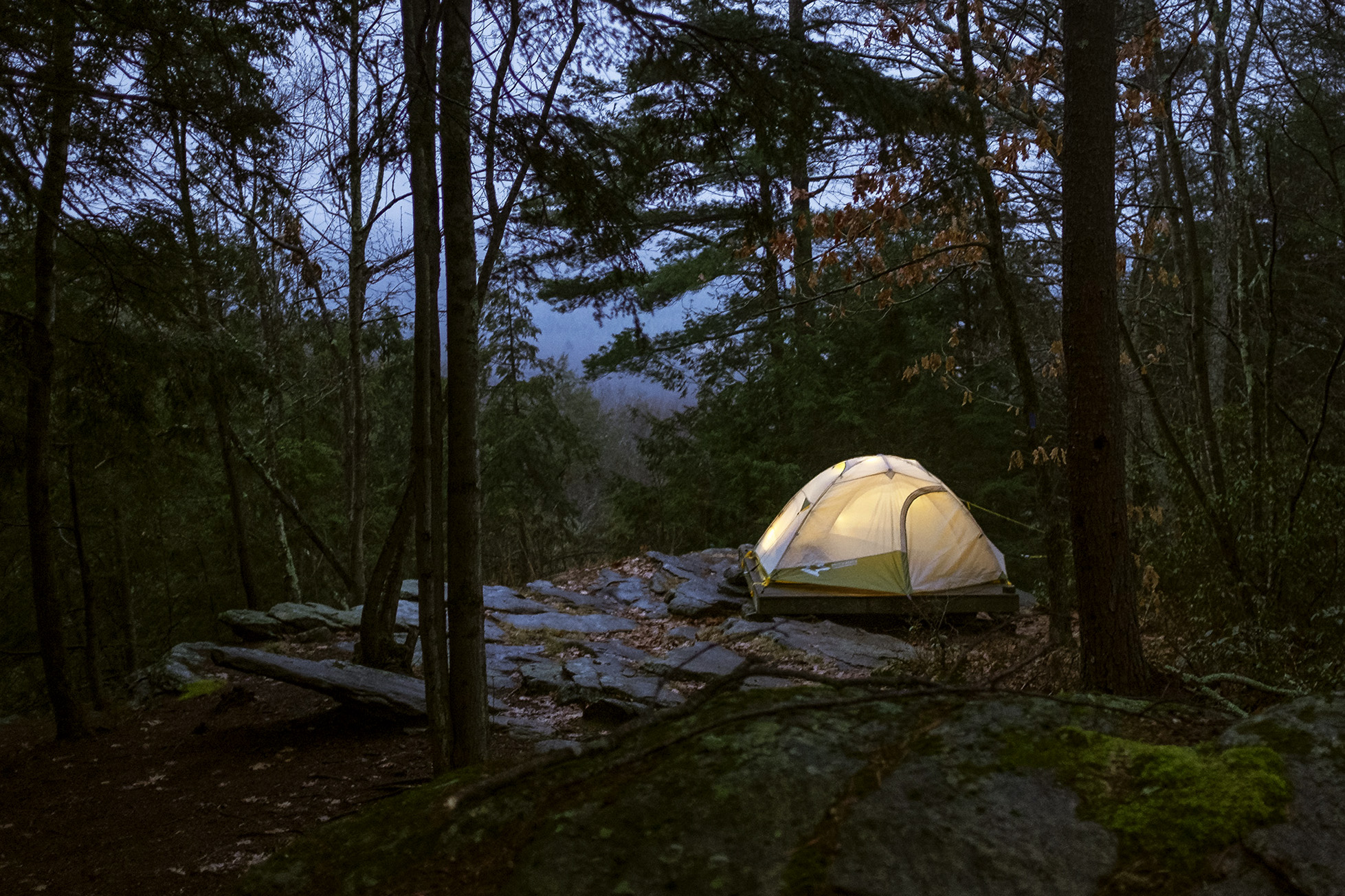
- These anchors are clutch if you’re pitching on a tent platform—especially one with no eye rings and few other tie downs. I pair them with ball bungees to help create tension for a taut pitch. They’re about $10 for a set of 10 on Amazon.
- The Platypus QuickDraw is a squeeze-style water filter that’s lightweight, packable and easy to use. You can drink straight from the filter or drain the “dirty” reservoir into another bottle.
- Heavy rain and high winds hit around 4 a.m., and my Mountainsmith Morrison EVO 2 rose to the challenge. I’ll eventually want to upgrade to a lighter tent for backpacking—but even after I do, I expect to continue enjoying this tent for paddling trips, when weight isn’t as much of a concern.
- Not pictured: A spoon, which I found still sitting on my kitchen counter when I got home. Instead of eating the Mountain House meal I’d packed for dinner, I feasted on a Clif bar with a side of Swedish Fish. I was ravenous by the time I got out of the woods, so I checked out the nearby Rio Cafe, which was excellent. As a bonus, I got to drive by the bowling alley where a worker from a local paper mill bowled a perfect game on 9/11.
I’m lucky to live within a relatively short drive of the White Mountains and the Adirondacks—both world-class backpacking destinations that I look forward to exploring someday. But I’m also glad to work through some of the typical beginner’s mistakes in places where a forgotten spoon won’t throw a wrench in a trip I’ve been anticipating for months. And I’m glad to find new reasons to appreciate the region I’ve called home for nearly all of my life.
